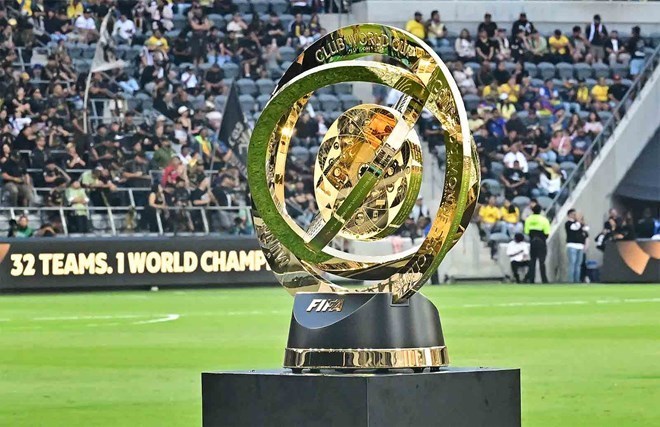The first edition of the FIFA Club World Cup with 32 participating teams is considered a positive thing, from almost all perspectives. Previously, there were not many opportunities for teams from different continents to meet each other in competitive matches.
In a globalized world dominated by major European clubs, this is an opportunity for the rest of the world to show their value.
Tlhopie Motsepe, President of South African club Mamelodi Sundowns, said: "We came there to play, but also to show the beauty of Africa.
If we come back and people say, 'Oh, do you remember South Africa? Do you remember how they play?" That was interesting to me. That will be success".
5 years ago, FIFA President Gianni Infantino said that he wanted to pave the way for clubs from all continents to compete at the highest level. We can be skeptical about Infantino's motives, but it is undeniable that the participation of clubs outside of Europe is the first and very important step.

Of course, we cannot ignore the negative aspects of this tournament. The FIFA Club World Cup takes place at the end of a long season in Europe with many exhausted players, causing organizations such as FIFPro, the cau thu federation, to speak out to warn and even take legal action against FIFA.
After that, FIFA actually promised too much. They say the tournament will generate more than 2 billion dollars in revenue - 1 billion from broadcasting rights, half a billion from sponsorship and another half a billion from ticket sales.
In terms of ticket sales, the initial ticket price listed at 250-350 USD to watch the opening match between Inter Miami and Al Ahly has been reduced to 55 USD.
Infantino has guaranteed to sell all tickets for the opening match, although there are still thousands of tickets left. If the home team Inter Miami cannot sell all tickets for the first match despite Lionel Messi in the squad, then the matches after many risks will be stagnant.
However, among all this, there is an undeniable truth. The world of club-level football is getting closer together in a way that has never been seen before.

Clubs cannot participate in major tournaments due to geography issues now have the opportunity to step onto the stage.
The first World Cup, hosted by Uruguay in 1930 was also quite chaotic. There were 16 participating teams, but the two teams (Japan and Thailand, formerly Siam) withdrew at the last minute.
Another team, Egypt, really missed the ship that was expected to take them to Montevideo. Both teams in the final (Argentina and Uruguay) wanted to use their own balls, so the referee decided that they would play each half with a different ball.
Look at the World Cup now and see how successful the tournament has been, not only from a sports perspective but also from a social and cultural perspective.
Can the FIFA Club World Cup achieve that? Or will it disappear like some of FIFA's previous silly initiatives?
Like the World Cup for the national team, the FIFA Club World Cup 2025 will gather 32 teams, divided into 8 groups, each group has 4 teams, competing in a round-robin. The top two teams in each group will qualify for the 1/8 round and compete in the knockout round.











